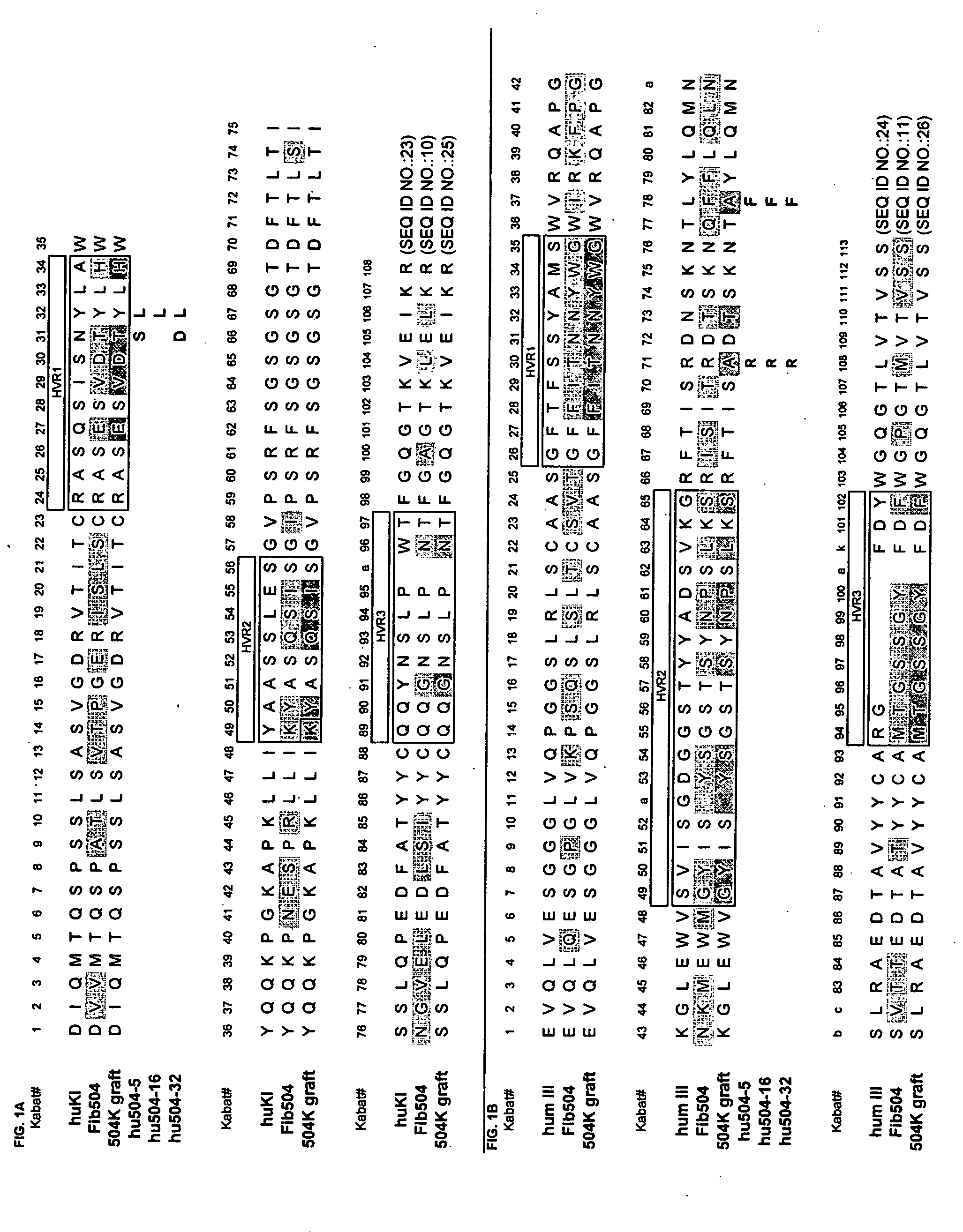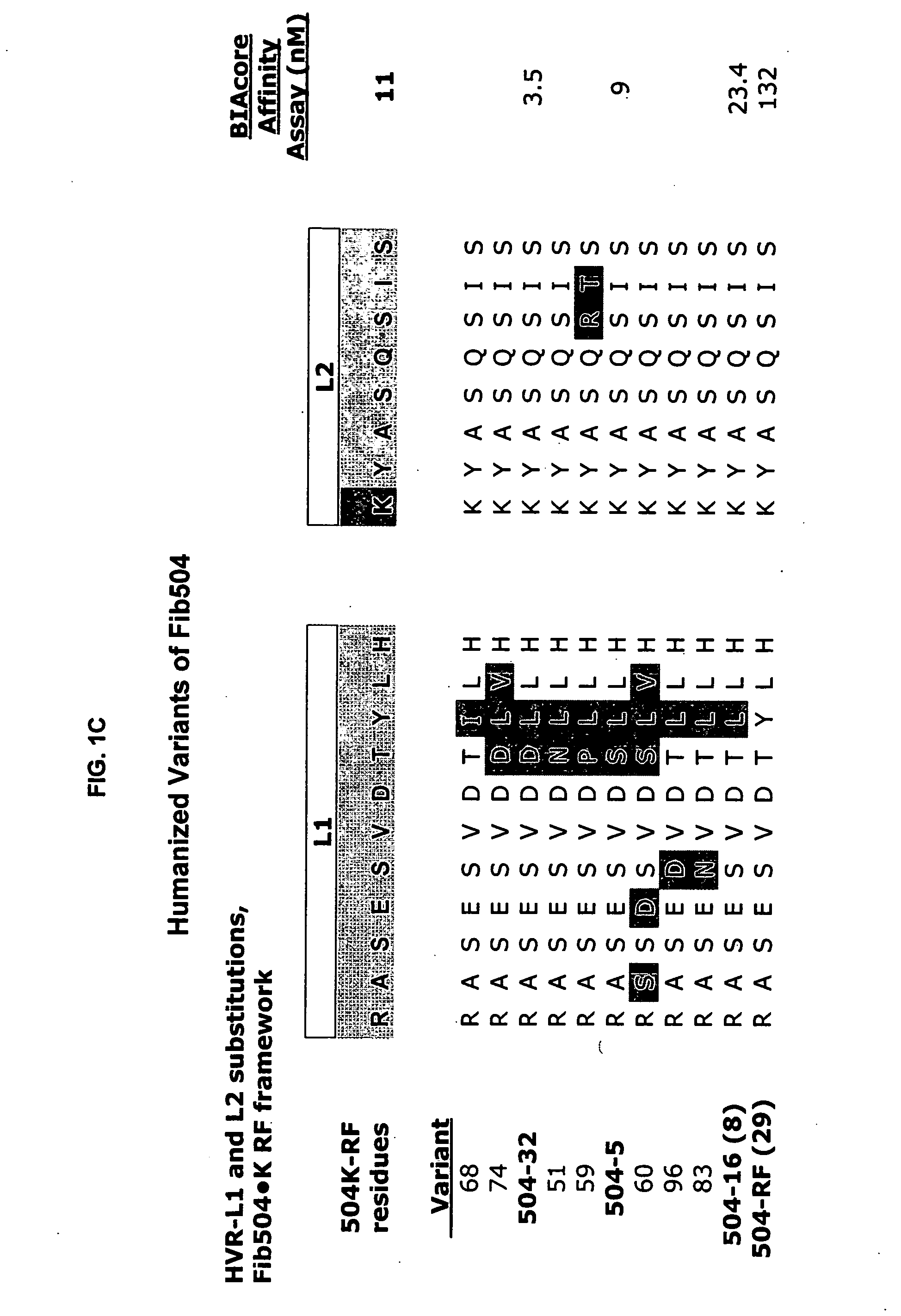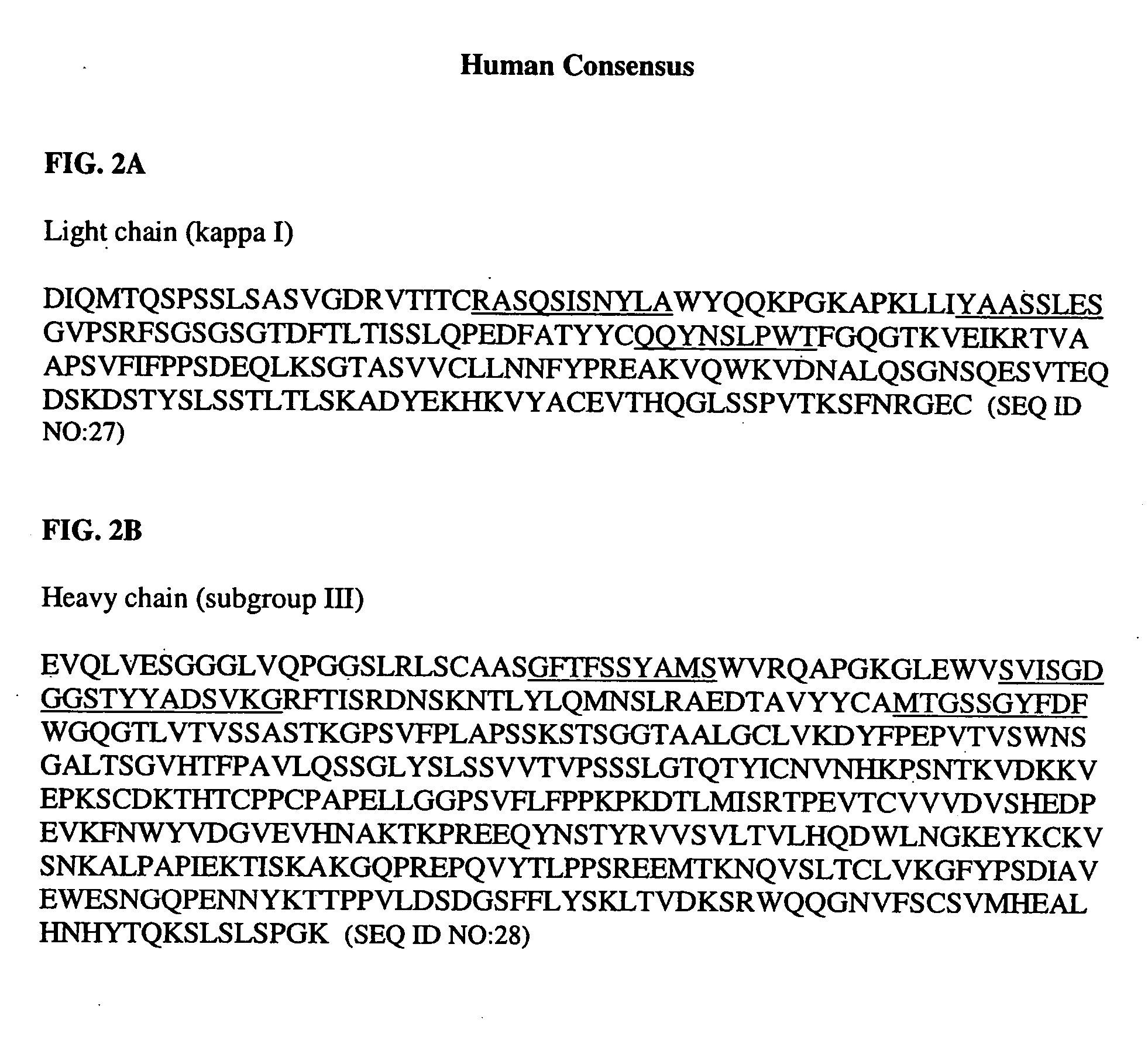Humanized anti-beta7 antagonists and uses therefor
- Summary
- Abstract
- Description
- Claims
- Application Information
AI Technical Summary
Benefits of technology
Problems solved by technology
Method used
Image
Examples
example 1
Humanization of a beta7 Antagonist Antibody
Materials and Methods
[0436] Residue numbers are according to Kabat (Kabat et al., Sequences of proteins of immunological interest, 5th Ed., Public Health Service, National Institutes of Health, Bethesda, Md. (1991)). Single letter amino acid abbreviations are used. DNA degeneracies are represented using the IUB code (N=A / C / G / T, D=A / G / T, V=A / C / G, B=C / G / T, H=A / C / T, K=G / T, M=A / C, R=A / G, S=G / C, W=AfT, Y=C / T).
[0437] Direct hypervariable region grafts onto the acceptor human consensus framework—The phagemid used for this work, pVO350-2b, was a monovalent Fab-g3 display vector having 2 open reading frames under control of the phoA promoter, essentially as described in Lee et al., J. Mol. Biol. (2004), 340(5):1073-93. The first open reading frame consists of the stII signal sequence fused to the VL and CH1 domains of the acceptor light chain and the second consists of the stII signal sequence fused to the VH and CH1 domains of the acceptor heavy...
example 2
Additional Humanized Fib504 HVR Variants
[0458] The HVR amino acid sequences of humanized variant Fib504.32 were further modified to generated additional variants capable of antagonizing the activity of beta7 integrin subunit and / or integrins containing the beta7 subunit.
[0459] Generating a broad amino acid scan library—A library to scan selected HVR positions for other amino acid residues capable of generating beta7-binding variants of variant hu504.32 was generated using 3 oligonucleotides: 504-L1, designed to soft randomize a portion of HVR-L1 with a bias towards the hu504.32 HVR-L1 sequence (i.e. the sequence ASESVDDLLH (SEQ ID NO:47, for relative positions A2-A11) was soft randomized as described above); and HVR-L3 504-N96 and HVR-H3 504-M94 which introduce NNS at positions HVR-L3 position 96 in the light chain and HVR-H3 position 94 in the heavy chain, thus allowing all 20 amino acids at these positions. With these three oligonucleotides, the broad amino acid scan library was...
example 3
Cell Adhesion Assays
[0466] The ability of some of the humanized Fib504 variants of the invention to bind ligands expressed on a cell surface was tested by cell adhesion assays. Binding to alpha4beta7 and another beta7 integrin, alphaEbeta7 were tested by the ability of the humanized variants to disrupt binding of the integrin to its natural receptor. Binding of the humanized Fib504 variants to beta7 subunit alone expressed on a cell surface was similarly tested. The procedures and the results are described below.
[0467] IgG production—Humanized Fib 504 IgG variants were expressed transiently in 293 cells (Graham et al. (1977) supra) using a separate vector for the light and heavy chains. The vectors were constructed by subcloning the light or heavy variable domains into suitable expression vectors for each of the light and heavy chains. Supernatant from 1.1 L CHO cell culture of a humanized Fib504 variant was filtered through a 0.45 um filter and applied to a new 1 mL HiTrap Protei...
PUM
| Property | Measurement | Unit |
|---|---|---|
| Current | aaaaa | aaaaa |
| Digital information | aaaaa | aaaaa |
| Molar density | aaaaa | aaaaa |
Abstract
Description
Claims
Application Information
 Login to View More
Login to View More - R&D
- Intellectual Property
- Life Sciences
- Materials
- Tech Scout
- Unparalleled Data Quality
- Higher Quality Content
- 60% Fewer Hallucinations
Browse by: Latest US Patents, China's latest patents, Technical Efficacy Thesaurus, Application Domain, Technology Topic, Popular Technical Reports.
© 2025 PatSnap. All rights reserved.Legal|Privacy policy|Modern Slavery Act Transparency Statement|Sitemap|About US| Contact US: help@patsnap.com



